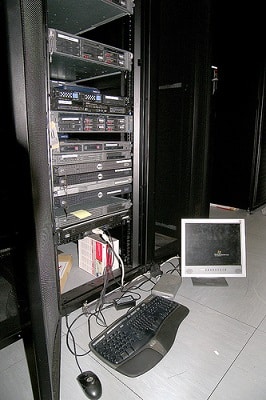Have you ever tried to work through the nightmare of a server crash? What makes it even worse is the fact that server crashes are different and may give you varying challenges. Server crashes tend to disrupt your activities when you are in the middle of something important. They may cause unnecessary delays and inconvenience you at the most critical moments of your life.
So how you go about this unexpected nightmare? Even though server crashes vary in quite a wide range, there are vital things that can give you some help when things get out of hand. These simple ideas cover a wide range of server issues and you can borrow a leaf to fix them.
Symptoms of the crash
There are many conventional thoughts that people get when a server crashes. Therefore, the first thing to do is finding out the underlying problem. Try to find out some of the possible symptoms of the crash and check if there may be recent changes in the server. You can look out for symptoms such as failure of server to power up, low or depleted system resources, software problems, server workload, network problems, changes in hardware configuration, display of blue screen of death (BSOD) when server powers up and failure of vital services to start after server powers up.
More often than not, when there is a power-up failure in the system, the problem lies in the hardware. Chances may be that you are having a power supply that has gone bad. In light of power supply, ensure you plug in the system before determining its condition. Always check the power surge and UPS before drawing conclusions.
Handling failure after booting the system
Sometimes the booting may be successful but the server still fails to start. The screen may only show the BSOD, which is quite irritating to look. In this kind of scenario, you are probably dealing with a hardware failure or even a bad device driver. When people make hardware replacements, sometimes there may be compatibility issues.
Therefore, if you have recently installed a new device driver, this may be a good clue to where the problem lies. To get to the root of the problem, boot the machine into a safe mode. Machine failure to boot into safe mode is even a clearer indication that the problem is hardware related. Corrupt Windows installation may also be the cause of the system failure; nevertheless, your top priority right now is deciphering the blue screen (BSOD).
In some cases, you can be able to boot the system into safe mode. The problem in such cases always has a lot do with the driver. Driver-related issues also result in BSOD. Safe Mode loads the Windows using a set of drivers and services hence enabling successful booting of the system. This is because as the system loads into the safe mode, the main problem does not get loaded with the other computer programs.
Finding clues in search event logs
Event Viewer is one of the reliable places where you can commence you diagnostic process to search the root of the server problem. If there is a problem, it will turn up in the Events Manager. In instances where the problem does not turn up, you need to go the Device Manager and disable anything that is not crucial to the Windows. Generally, this idea aims at mimicking the driver set used by Safe Mode.
Preventing server crashes
Regular maintenance of the server and generally all the PC devices in a company is a responsibility of the IT technicians. Apparently, there is no absolute, proactive and reliable software that will indicate to you the imminence of a system failure. Even if there are some exceptional software programs, the notification of system failure comes late. The only option you may have is checking with IT support in Bay area or any other place when dealing with server issues.
They will brief you on the most essential aspects concerning the server, network and current performance. IT experts will check logs occasionally, run hard drive tests to determine the efficiency of a server and carry out other vital tests to ensure that the server always functions at its optimal. You also need to back up things quite often as it helps in restoring severe server crashes through backup of old working-file.
Sever crashes may be a nightmare but there is always a way out even in the worst scenarios. Seeking IT support goes a long way to help fix some of the complicated server problems that may be beyond your scope. Some server issues may be trivial and as such only require general sense. Ensuring that you check the plug and the power supply helps to determine the server problem related to power. Booting the system triggers restart which, refreshes the system and enables it to work efficiently again. Backing up things in the server is another effective way that can keep it functioning well without any disruptions.



You must be logged in to post a comment.